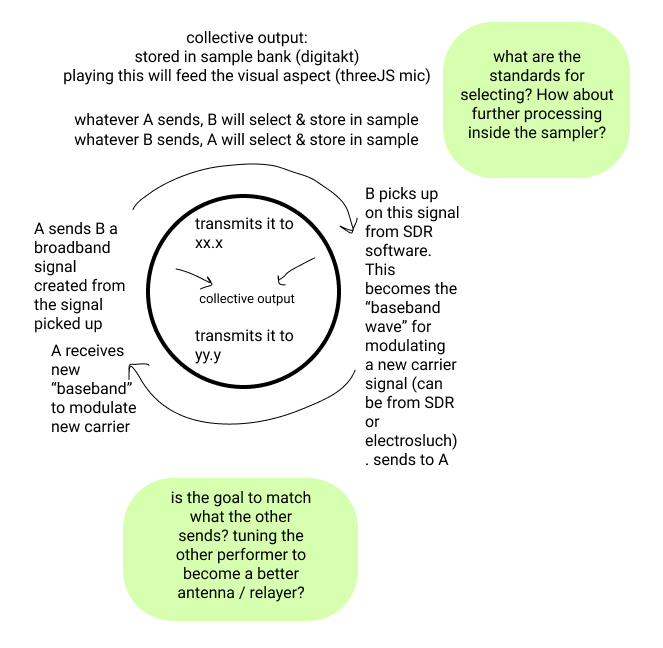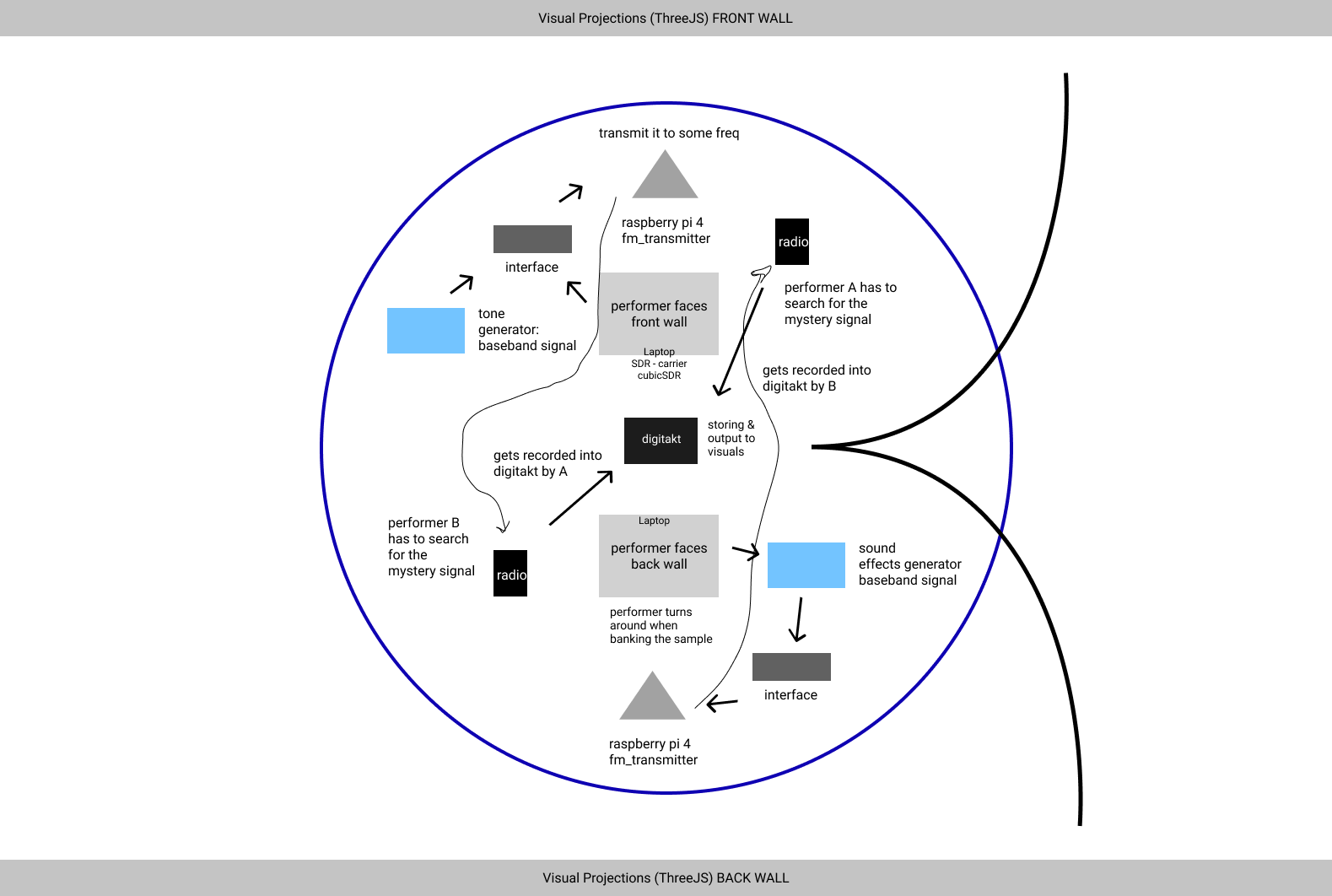new schematics (hopefully they work)
This week, I met with two more people, Rudi and Afroditi Psarra, who I reached out to thanks to Despina’s reference.
I reached out to Rudi because I was hoping to gain some insight on how to carry out some of the engineering aspects of the installation. These words from him particularly stood out to me: “we listen to what can filter; we see only what we can decode,” which then expanded to his acknowledgement that in general, we don’t question any of these technical processes. They’re assumed to be as accurate as our innate senses, if not enhancing the breadth of their interpretation. I think it was a bit tricky translating the performance aspect, mostly because I also didn’t have a very clear idea of what I wanted to accomplish. However, he gave me good tips on experimenting with antennas (touching the ends, manipulating reception with touch from other materials) and possibly making a waveform generator with an arduino. I was particularly intrigued by the idea of using aluminum foil to create directions of reception in the antenna or to reflect sound back to the receiver. These will be fun things to try out when taking the sound and performance aspect further.
Meeting with Afroditi was extremely helpful, mostly because she’s sort of been the only artist I’ve met who has experience in amateur radio experimentation and SDR. She definitely helped me narrow in on some pretty basic conceptual aspects in relation to radio. Before, I was agnostic to the signals I pulled from SDR and after explaining to her that i was primarily interested in Internet data, she asked why I didn’t analyze signals from Internet frequencies. I guess I didn’t know I could do that, but after looking into it, it’s either pretty expensive to get equipment to capture signals above 1.75 gHZ or it’s pretty messy (involves down-converting signals to the more popular SDR dongle but I don’t plan on doing that). One alternative I’m considering is buying this electrosense kit, which includes an open-source board that acts as the down-converter and then expands the range from 0 to 6gHZ (6! that means I can listen to 5G) but I also applied to get a free sensor, so maybe that’ll work out. If I don’t hear from them in a week then I’ll just get it (still cheaper than a HackRF). Other than that suggestion, Afroditi was helpful in pointing towards more resources to building antennas as well as works and experimentation specifically in my field of interest. I’m very excited to dig into them!
I feel like I’m now a bit behind, because I’m needing to get through a lot more new research but I’m excited that there is a subset of artists who are very interested in this (wavefarm residency). I guess there are two things I realize I need to work on: 1) refine the story of the performance a bit so it’s not as nebulous as speculative topology / data movement / processing & interpreting & archival. I’ve been thinking a lot about the history and the epistemic roots of the cloud (network before cloud) – what led to the centralized perception of it (all ether) and how that was maintained, controlled, and developed by creating its users (goes back to Deleuze’s control society where the ideal user monitors itself in ways that adhere to the sovereign objective). I believe that a duet is still an interesting way to develop this idea of refining a user where the user starts out as someone who actively does the filtering and eventually conforms to a certain manner of listening, filtering, and transmitting. From this, I’ve built out a new schematic that makes sense to me and seems doable but I haven’t actually figured out the scripting of it yet…
2) >> roughly build this >>

expanded version w/ fun circuits!

I need to figure out how to do this via GNU (which I think I can based on this am transmitter / receiver patch) and then how to route it to the raspberry pi.
I’m way less experienced with p-com, which is why I’ve been hesitant making sound circuits (tone generator, even some antennas, or an actual transmitter) but I think if I nail this ^ even without the additional generators, I’ll be in a good enough place to do the physical fabrication in the summer.
Related Posts
Leave a Reply Cancel reply
You must be logged in to post a comment.
Kat Sullivan
Adam Colestock
Helen (Chenuan) Wu
Christina Lan
Dorian Janezic
George Faya
Julia Myers
Kelsie Smith
Michael Morran
Po-Wen Shih
Liu Siyan
Fisher Yu
—
Craig Protzel
Christopher Wray
Haoqi Xia
Hayden Carey
Katherine Nicoleta Helén
Maria Maciak
Parisa Shemshaki
Sakar Pudasaini
Skyler Pierce
Steven Doughty
Yiqi Wang
—
Andrew Lazarow
Benoit Belsot
Enrique García Alcalá
Hongyi Zhang
Jay Mollica
Li Shu
Teddy (Jian) Guo
Monika Lin
Wenye Xie
Yiru Lu
